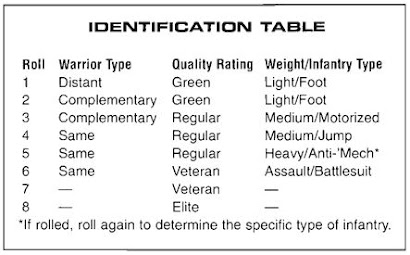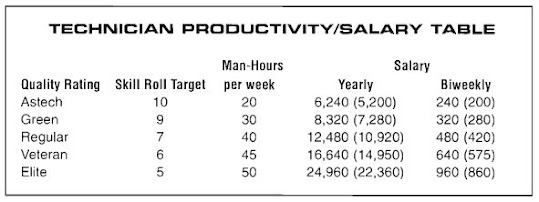Games set in Ironguard are back on the menu this winter break. I have two-ish weeks without work and WITH friends that are available, so it is back to Ironguard we go.
So warm yourself by the fire and enjoy a mug or three of mulled wine as I relate the tale of the Warriors Three (no, not Volstagg the Voluminous, Fandral the Dashing, and Hogun the Grim), but Carwreck the Dwarf Fighter, Yelrah the Half-Orc Barbarian, and Corvallis of the greater Frilkasses, the Half-Elf Bard, and their quest to throw down another temple of chaos!
----
Our noble band of adventurers meet at Ironguard Keep and after rolling on the rumor table for B5: Horror on the Hill, they decided to go hunt some potential Ogre slavers (rumor 3) because killing slavers is always a worthwhile endeavor. As they equip themselves, they mentally prepare for ghouls (rumor 4) and for a trek to a monastery on the hill (rumor 1) - a likely place to find a Temple of Chaos!
During preparations, they spoke of a variety of topics, to include Yelrah's bitchin' tattoo. From Carwreck he learned it is the symbol of a Dwarven warrior cult dedicated to Clangeddin Silveraxe. Being a Half-Orc, it was deemed necessary for Yelrah to relate the tale of how he came by the tattoo.
We also learn that Carwreck is suffering a midlife crisis, having left the army for a life of true adventure. Corvallis then dubs the company Dwarven Half and Half - the cream of the crop, as it were.
Fully equipped, the intrepid explorers head into the ruins of Kingsbridge, with plans to cross the Kingsbridge proper and find the monastery and kick Ogre ass.
-----
Whilst in the ruins, the trio make it a point to say hello to Geppetto, the lone survivor who often talks about his wife and children. Said wife is never seen, but his 'children' are - wooden puppets between 2 and 3 feet tall that are never seen to move, yet always appear closer when looked for. He recalls Yelrah from previous encounters. When Carwreck looked closely at one, it winked at him, sending the brave Dwarf scurrying.
A variety of unnatural statues were appreciated and examined by the PCs - particularly the numerous rats, birds, and a mounted knight, his horse rearing up on two legs. Corvallis examined the stone and determined it to be unnatural and suspicions of Geppetto's wife being a medusa were bandied about (out of Geppetto's earshot, of course).
After gathering information from Geppetto, the intrepid band set off across the fabled Kingsbridge, an ancient Dwarf-made bridge spanning a deepish gorge, through which the river ran through. Yelrah and Carwreck ran a footrace to the center of the span, and while catching their breath, they watched as first one, then a second, massive hand pulled an equally massive troll up over the side of the bridge, where it stood - its feet touching either side of bridge - and demanded a toll.
Discussion revealed the troll's name was Bannakaffalatta (because I had watched a Dr. Who Christmas special earlier that day) and it charged a toll to pass, to compensate its civic duty of keeping the bridge repaired. Carwreck's quick investigation into nearby repairs verified the statement - fine Dwarven architecture, repaired by crude, yet functional, Troll stonework.
Corvallis and Yelrah quickly paid, with Bannakaffalatta swallowing the tolls. Carwreck balked and spit in Bannakaffalatta's massive hand. Corvallis's quick wit and silver tongue convinced the Troll that Dwarf spit was good for ashy skin, particularly faces. This resulted in Carwreck spitting in Corvallis's hands and Corvallis rubbing it all over his face. Bannakaffalatta grudgingly agreed, slapping Carwreck on his back as a gesture to GTFO the bridge. This slap sent the Dwarf flying and left him sprawled on the ground. The others took the hint and convinced Carwreck to take it as well, and they found themselves on the eastern side of Kingsbridge.
The plan involved overnighting at a caravanserai known to be several hours from the bridgehead, but upon arrival, it was apparent that it was no longer occupied. The holes in the roof, the breaches in the low wall around the caravanserai, and the ashes of a bonfire containing scorched human bones being the main evidence. Still, they cautiously entered the ruined building, and upon exploration, Yelrah encountered a ghoul feasting on hobgoblin. Slaying the ghoul, the trio then cleared the rest of the ruins and used debris and an Alarm spell to secure the area somewhat.
To cap things off, a rusting iron box was found in the well in the basement - containing a permanently waterlogged Cloak of Fire Resistance, an Elven dagger that constantly whispers "Stick me in your enemies!", a handful of water-damaged scrolls and a map, and a sack of coin.
Then the Alarm spell went off and two more ghouls appeared, being swiftly dealt with by Carwreck and Yelrah. Luckily for the PCs, the rest of the night passed without issue. In the morning, multiple sets of naked humanoid prints and large wolf prints were noticed on the ground around the area and heading up the trail to the monastery.
-----
After a cold breakfast, the trio set off, proceeding up the trail, following the tracks in the muddy soil. Soon, they came to a patch of Berry Bushes - large, ripe, tasty-looking raspberries that were found to be growing well out of season, so they avoided. Moving ahead, the Warriors Three heard the sound of combat and fanned out to see what or who was fighting.
Caution paid off, and the trio found themselves unnoticed, watching a pitched battle between Ogres and Centaurs. Joining on the side of the Centaurs, our heroes acquitted themselves well (quite well, actually, even without damage dice cascading too much), quickly vanquishing the Ogres and earning the grudging respect of the Centaurs.
The chief of this band introduced himself as Red Cloud and stated that this was his tribe's land, and that the PCs would be welcome to overnight with them but must leave in the morning. In addition, he warned the PCs quite clearly about the folly of camping in the dark, alone, under a full moon, in this area.
Taking the hint, our heroes bedded down with the Centaurs, and were awakened in the night by howling and sounds of fighting! (It is important to note that our heroes dined upon roasted Ogre flesh for dinner, much to the disgust of the Centaurs. This resulted in each player rolling a d10, resulting in Corvallis gaining strength and constitution at the cost of intelligence, wisdom, and charisma, while Yelrah and Carwreck began to transform into Ogres!)
(DM note - this table was found in The Monster Overhaul, and the reason they eagerly consumed ogre flesh was because of a rumor they heard from Bestial Ecosystems Created by Monstrous Inhabitation - that consuming giant flesh leads to godhood.)
Eagerly joining the fray, the band found themselves battling foul werewolves that healed damage almost immediately! Still, the lycanthropes were driven off, and one was captured, having its leg broken by a magical weapon (Yelrah's stone blade Stoney). Interrogation proved fruitful, and the PCs learned that the monks that survived the coming of the Eye of Arik (belonging to Arik of the Hundred Eyes) transformed into werewolves, thirsting for sentient blood and meat.
Putting the werewolf to the magical sword, our heroes (mostly Corvallis) then managed to insult Red Cloud and his tribe's druid, Eagle Feather, so were banished from the camp - but not without being thanked for their good deed of assisting the tribe. Fortunately for the PCs, the rest of the night passed uneventfully.
The next morning, the PCs continued towards the monastery, stopping when they came upon a cottage. Knocking on its door, they met and had tea with the sisters Rosalinda and Rosabella. As the kettle boiled, the sisters mended the water-stained map that Corvallis carried, and it was revealed to be a decent layout of the monastery. Over tea, the sisters provided additional information, including the facts that transforming into an ogre can be stopped through doing good deeds and that they would be absolutely delighted to have the head of the Ogre King delivered to them.
The sisters sweetened the pot by 'gifting' the PCs with several potions and scrolls, to better ensure their success. Our heroes readily agreed to getting paid for murder, so they thanked the sisters and off they went.
Making use of the map and the sisters' advice, the PCs entered the ruins through the cemetery, opting to not explore the mausoleums they passed (sad DM noises were made). Once inside, the PCs discovered a chasm that periodically spat a geyser, accompanied by gurgling noise and gouts of boiling water. A clever plan was made involving the timing of the geyser and luring things into or near it.
Moving forward, the suspected lair of the werewolves was found, so the PCs bravely went the other direction, into the buildings proper. Making use of a potion of invisibility, it was discovered that most of the ogres were asleep, to include the Ogre King. A plan was hatched involving invisibility, flaming oil, violence, and lots of luck and off the trio went.
For the most part, everything went according to plan, bringing death and blood to the ogres and only minor injuries to our heroes. After slaying (and beheading) the Ogre King (I even used Hill Giant stats), the PCs sampled the refreshing fountain in the middle of the ruins.
We should know tomorrow night!
-----
Thus pauseth the tale of the Warriors Three,
In dire circumstances, though they may be.
My cup it is empty, my thirst it does loom,
Whilst noble heroes brace themselves for their doom.
This week we meet again, their fate to decide,
will this noble venture become suicide?
Or instead shall they snatch victory from sure defeat,
And at the Baron's table surely earn a seat?






























